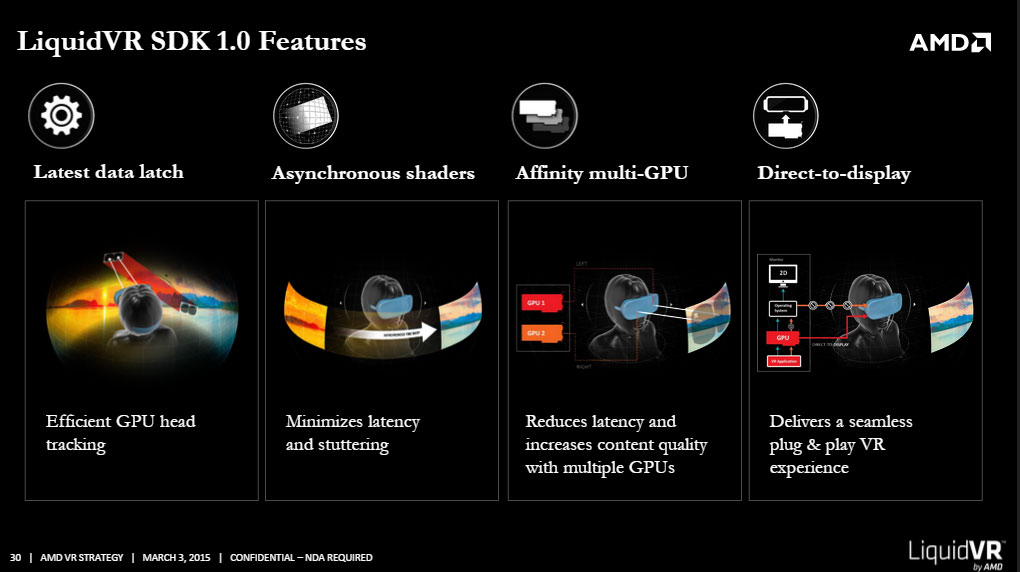Developers will soon get access to the LiquidVR SDK, which will help them address numerous issues associated with VR development.
Platform and software rather than hardware
If you were expecting to see a sexy AMD VR headset with a killer spec, the announcement may be disappointing. However, if you are a “what’s under the bonnet” kind of geek, there are a few interesting highlights.
AMD has put a lot of effort into minimising motion-to-photon latency, which should not only help improve the experience, but also keep you from experiencing motion sickness, or hurling over that new carpet that really ties the room together.

Headline features of LiquidVR SDK 1.0 include:
- Async Shaders for smooth head-tracking enabling Hardware-Accelerated Time Warp, a technology that uses updated information on a user’s head position after a frame has been rendered and then warps the image to reflect the new viewpoint just before sending it to a VR headset, effectively minimizing latency between when a user turns their head and what appears on screen.
- Affinity Multi-GPU for scalable rendering, a technology that allows multiple GPUs to work together to improve frame rates in VR applications by allowing them to assign work to run on specific GPUs. Each GPU renders the viewpoint from one eye, and then composites the outputs into a single stereo 3D image. With this technology, multi-GPU configurations become ideal for high performance VR rendering, delivering high frame rates for a smoother experience.
- Latest data latch for smooth head-tracking, a programming mechanism that helps get head tracking data from the head-mounted display to the GPU as quickly as possible by binding data as close to real-time as possible, practically eliminating any API overhead and removing latency.
- Direct-to-display for intuitively attaching VR headsets, to deliver a seamless plug-and-play virtual reality experience from an AMD Radeon™ graphics card to a connected VR headset, while enabling features such as booting directly to the display or using extended display features within Windows.
You can grab the full AMD LiquidVR presentation here. (pdf)
What’s next for LiquidVR?
It all depends on what you were expecting, and what the rest of the industry does. AMD hopes LiquidVR will be compatible with a broad range of VR devices. LiquidVR will allow hardware makers to implement AMD technology in their products with relative ease, enabling 100Hz refresh rates, the use of individual GPUs per each eye and so on.
To a certain extent, you can think of LiquidVR as FreeSync for VR kit.
Oculus CEO Brendan Irbe said achieving presence in a virtual world is one of the most important elements needed to deliver a good user experience.
He explained where AMD comes in:
“We’re excited to have AMD working with us on their part of the latency equation, introducing support for new features like asynchronous timewarp and late latching, and compatibility improvements that ensure that Oculus’ users have a great experience on AMD hardware.”
Raja Koduri, corporate vice president, Visual Computing, AMD, said content, comfort and compatibility are the cornerstones of AMD’s focus on VR.
AMD’s resident graphics guru said:
“With LiquidVR we’re collaborating with the ecosystem to unlock solutions to some of the toughest challenges in VR and giving the keys to developers of VR content so that they can bring exceptional new experiences to life.”
A picture is worth a thousand words, so here’s 3300 frames of AMD’s virtual reality vision.




